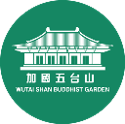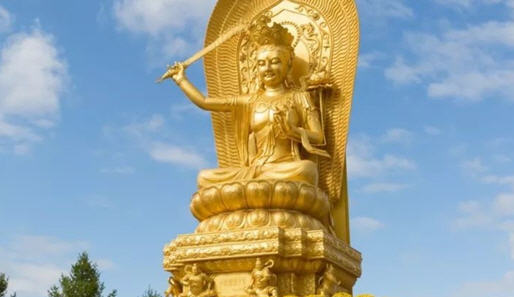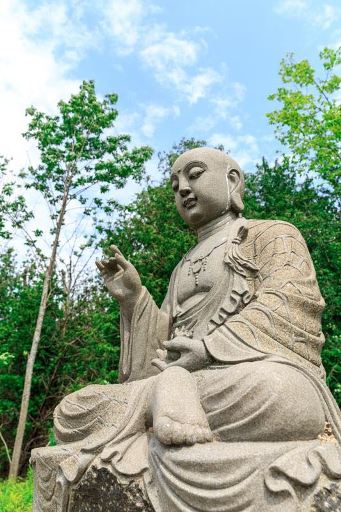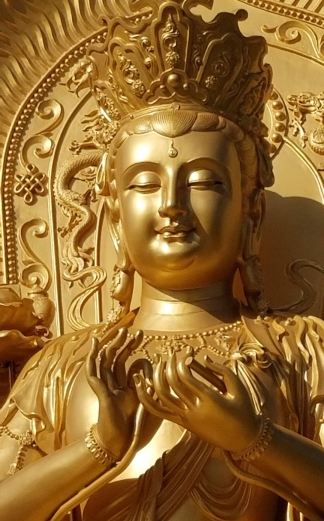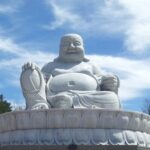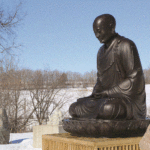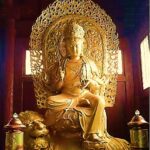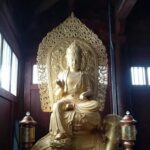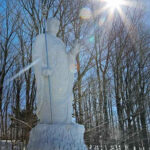Buddha Statues 佛像
As a spiritual and cultural centre that propagates “Humanistic Buddhism”, a monastic temple fosters and promotes inter-faith dialogue, in building a bridge between the East and the West. Ven. Dayi Shi has diligently undertaken the vows handed down by the three Elder Masters, by leading Sangha and laities in the development of Wutai Shan, one of the Four Great Sacred Buddhist Gardens in Canada.
寺廟作為心靈及文化中心,亦同時倡導 "人間佛教",培養和促進宗教間的對話,在東西文化之間架起一座橋樑。加國五台山是達義大和尚秉承師志,率領四衆弟子創建加國佛教四大名山之一。
Many different forms of Buddha statues are venerated in Wutai Shan Buddhist Garden. In the Main Dharma Hall, Shakyamuni Buddha is venerated in the centre, with Amitābha Buddha to his right and Bhaiṣajyaguru (Medicine Buddha) to his left. At the base of the Main Dharma Hall, there are 88 white jade Buddhas, with 88 golden Buddhas and 10,000 wood-carved statues of Buddhas inside the hall. Bronze and stone Buddha and Bodhisattva statues are venerated at various locations in the garden, such as the Wisdom Lake.
我們經常在寺廟裡看到不同的佛像. 加國五台山大殿和園區內供奉著不同種類的佛像; 大雄寶殿乃寺院內供奉佛像之主要殿堂。大殿內供奉的三尊佛像,即釋迦牟尼佛(中)、阿彌陀佛(右)、藥師佛(左)。大殿基層有八十八佛(缅甸玉佛), 大殿內八十八金佛及木刻佛聖像一萬尊,其他還有銅佛像和石雕佛像分別供奉在園區內的不同位置,如靈泉湖畔。
The statues of Buddha symbolize his extraordinary qualities and teachings. Seeing these statues remind us to get in touch with our own Buddha nature. Buddha nature - the true, spiritual essence of all things, exists everywhere. Most of us are so preoccupied with everyday matters that we rarely, if ever, give it much thought. The serene, compassionate face and composed posture of the Buddha statue reminds us of the spiritual side of life. It can ignite a spark of peace and insight within us. It is what they stand for that counts, not their physical appearance.
佛像是象徵佛法的教義。藉着看到莊嚴的佛像, 從而啓發我們人人本具的佛性。佛性: 是宇宙間人、事、物的本來面目,遍一切時,遍一切處。我們大多數人都專注於日常事務,以至於我們很少,甚至根本就沒有留意它。佛像寧靜、慈悲的面容和沈穩的姿態,提醒著我們生命中心靈的一面。它能令我們生起感恩心,慈悲心,令我們內心平靜,還能點燃洞察力的火花。重要的是佛像表彰的義理,而不光是他們的外表。
Buddhists do not only prostrate to a statue but to the Dharma that the statue represents. Dharma is the law of nature, and Buddhism is a way of life. What the Buddha taught is not just the law of nature but how we live by it. Buddha is not our master nor a creator. He instead is our supreme and most respectable teacher, one who is fully enlightened. When we prostrate, we are paying respect to the Dharma, represented and taught by the Buddha.
佛教徒禮拜佛像,是向佛像所代表的佛法敬禮。佛法是自然法則,是宇宙人生的真理,是一種生活方式。佛陀教導我們從聞思修,把真理落實到平常日用生活上。佛陀不是我們的主宰,也不是創造者。他是我們至高無上、最值得尊敬的導師,是一個徹底覺悟修行圓滿的人。當我們禮拜佛像時,我們是在向佛陀所演揚和教導的佛法敬禮。
We bow to express respect and appreciation for both the Buddha, our most compassionate teacher, and the Buddha nature within ourselves and others. Bowing is also a way to transcend pride and self-attachment.
我們鞠躬是為了表達對佛陀~我們最慈悲的導師,以及人人本具的佛性的尊重和感激。鞠躬也是一種去除傲慢和執着的方式。
